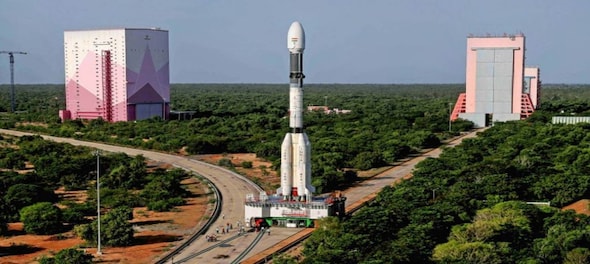
India's Geosynchronous Satellite Launch Vehicle (GSLV) suffered a technical failure soon after it blasted off from the Satish Dhawan Space Centre in Sriharikota, Andhra Pradesh, at 5.43 am on August 12. After just over five minutes of the flight, the final stage of the GSLV rocket failed to ignite and suffered a complete failure. Both the rocket and the payload, the GISAT-1 Earth observation satellite (EOS-03), were lost.
"GSLV-F10 launch took place today at 0543 Hrs IST as scheduled. Performance of first and second stages was normal. However, Cryogenic Upper Stage ignition did not happen due to technical anomaly. The mission couldn't be accomplished as intended," the Indian Space Research Organisation (ISRO) tweeted.
GSLV-F10 launch took place today at 0543 Hrs IST as scheduled. Performance of first and second stages was normal. However, Cryogenic Upper Stage ignition did not happen due to technical anomaly. The mission couldn't be accomplished as intended.
— ISRO (@isro) August 12, 2021
Why did the launch fail?
As GLSV took off from the launch centre, the initial two stages of the flight appeared to go off smoothly. The S139 engine burned the solid-propellant fuel as the four surrounding L40H Vikas provided additional thrust, before falling off and letting the second stage GS2 Vikas take over for propulsion.
The launch failed when the cryogenic upper stage engine failed to ignite. The cryogenic upper stage is the last stage of a rocket intending to reach the upper stages of the atmosphere, at the edge of space.
The cryogenic upper stage uses liquid oxygen and liquid hydrogen as fuel sources instead of solid rocket fuel or other Earth-storable liquid propellants. The cryo engine is a highly sophisticated technology that keeps hydrogen and oxygen at temperatures below -150 degrees Celsius in pressurised tanks before being combined together to provide propulsion. The cryogenic stage provides more thrust per unit of fuel when compared to other fuels and is necessary to reach farther into the atmosphere, and breaching the barrier of space.
In GSLV’s case, the cryogenic stage was supposed to function from 4 minutes and 56 seconds of the flight until 18 minutes and 29 seconds, whereupon GISAT-1’s self-propulsion systems would have carried it into the final position, some 36,000 km away from the surface of Earth.
What it means for ISRO?
The payload satellite, GISAT-1 or EOS-3, had been described as a “game-changer” for India. The satellite will be placed far out of reach of any anti-satellite missiles and its high-resolution cameras will allow India to have real-time, constant monitoring of large areas of Earth.
This will be used for monitoring of natural disasters, episodic weather events like cyclones, cloud bursts and thunderstorms. The satellite will also capture and obtain spectral signatures for agriculture, forestry, and water bodies. The GISAT-1 satellite had been marred by delays due to the COVID-19 pandemic, having initially been slated for a March, 2020 launch.
ISRO will need to go back to the drawing board and ensure that its cryogenic upper stage engines work without fail. The development of a cryo engine is absolutely essential for other advanced space missions, like the upcoming manned spaceflight mission, Gaganyaan.
This was the eighth launch and third failure of the GSLV rocket. Meanwhile, ISRO had launched Brazil's earth observation satellite Amazonia-1 and 18 smaller co-passenger satellites in February this year.
(Edited by : Shoma Bhattacharjee)
Check out our in-depth Market Coverage, Business News & get real-time Stock Market Updates on CNBC-TV18. Also, Watch our channels CNBC-TV18, CNBC Awaaz and CNBC Bajar Live on-the-go!


Telangana Lok Sabha elections 2024: Asaduddin Owaisi to Bandi Sanjay Kumar, a look at key candidates
May 11, 2024 3:32 PM
Lok Sabha elections 2024: Hyderabad to Kadapa, key seats in fourth phase
May 11, 2024 2:54 PM
Telangana Lok Sabha elections 2024: List of BRS candidates
May 11, 2024 1:55 PM

